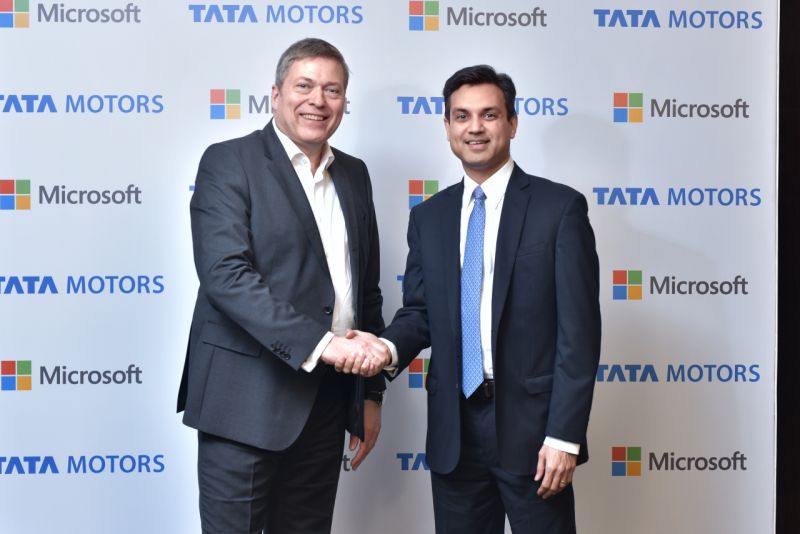
Tata Motors and Microsoft India have announced a strategic agreement to redefine connected and personalised driving experiences for Indian customers.
Tata Motors will leverage Microsoft’s connected vehicle technologies that bring together artificial intelligence (AI), advanced machine learning, and the Internet of Things (IoT) capabilities on the hyper-scale Azure cloud, to traverse the digital and physical worlds and create a personalised, smart and safer driving experience across the digital life of a vehicle owner.
The first vehicle showcasing the vision for these enhanced driving experiences will be unveiled at the 2017 Geneva Motor Show.
Commenting on the partnership, Guenter Butschek, CEO & MD, Tata Motors, said, “With the aim to develop innovative and technologically-leading products that excite customers, we at Tata Motors, understand the need for a connected ecosystem that can integrate into the digital lives of customers. We are using Microsoft’s connected vehicle technologies on Azure intelligent cloud to bring the digital lives of our customers into the cars they drive. Making the most of fast-paced innovation cycle that Microsoft has to offer, we will create a fully connected and seamless driving experience for our customers.”
Commenting on the association, Anant Maheshwari, President, Microsoft India said, “We are excited to partner with Tata Motors as they embark on a new journey of innovation with Microsoft Azure cloud. Using IoT, AI and machine learning technologies, we will provide vehicle owners in India and across the world with a safe, productive and fun driving experience.”
Using Microsoft technology will empower Tata Motors to provide connectivity features on mainstream, mass-market vehicles. In addition, Tata Motors’ recently launched sub-brand, TAMO, will act as an open platform to foster innovation through a start-up ecosystem and develop vehicles with on-the-go connectivity. In its first phase, the offerings will incorporate technologies such as cloud computing, geo-spatial analytics and mapping and increased human-machine interface, creating a new benchmark in the industry for connected vehicles.
Story: Sahej Patheja




















Leave a Reply